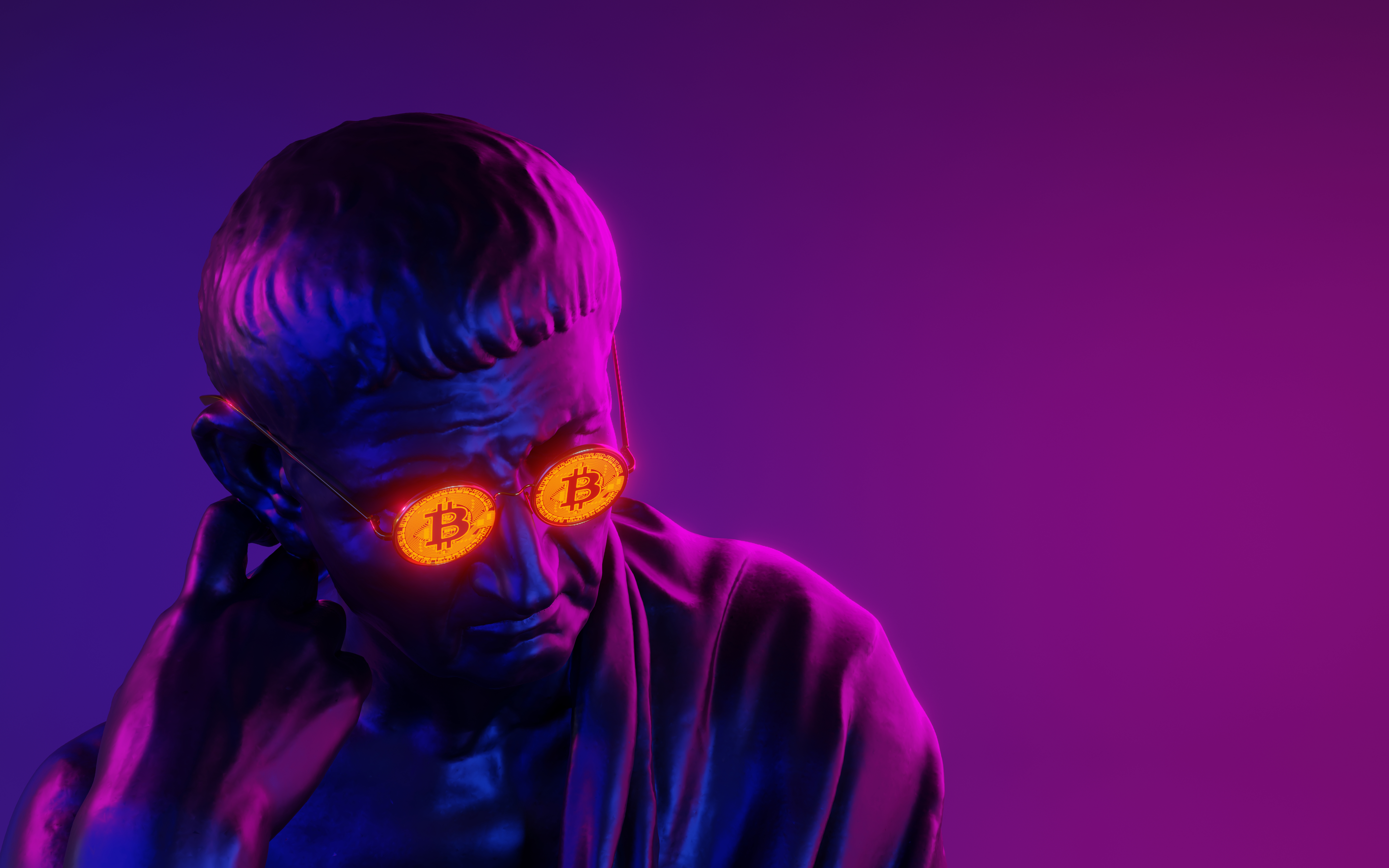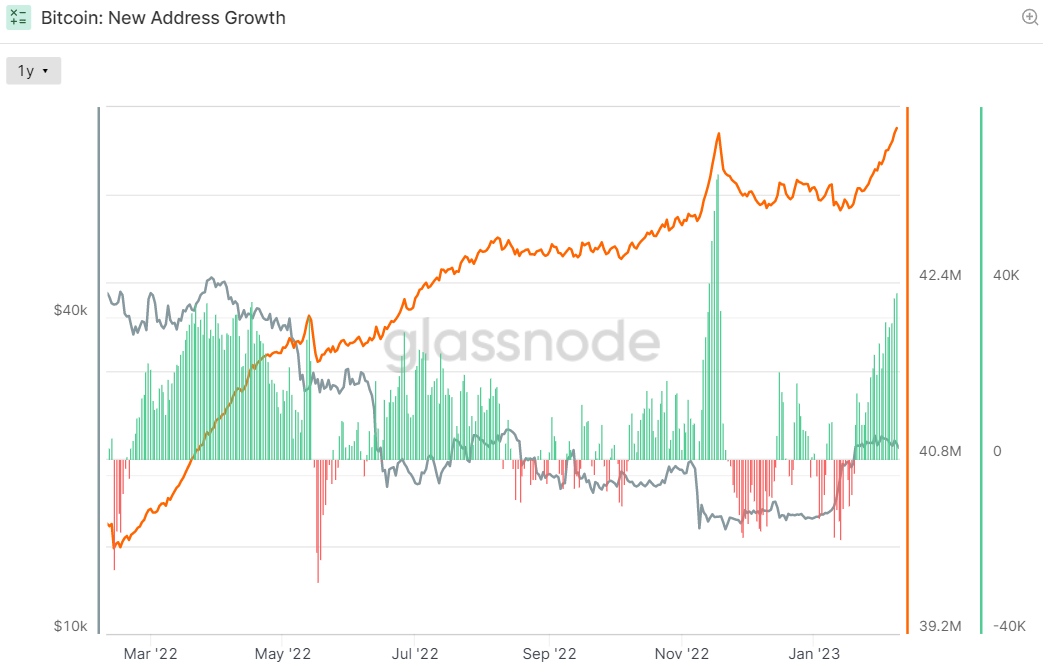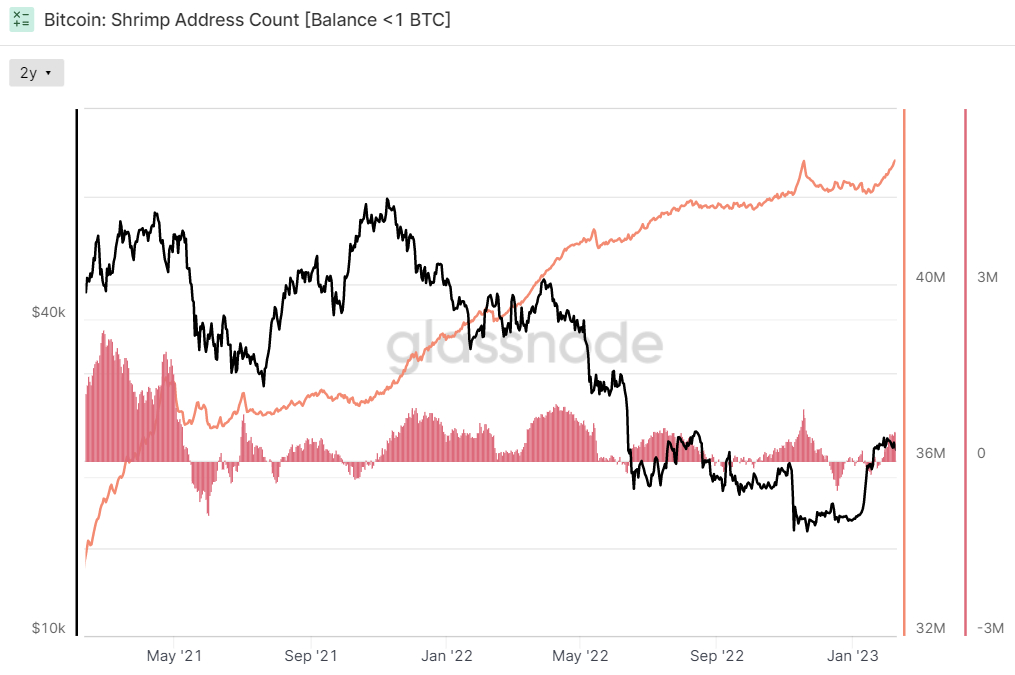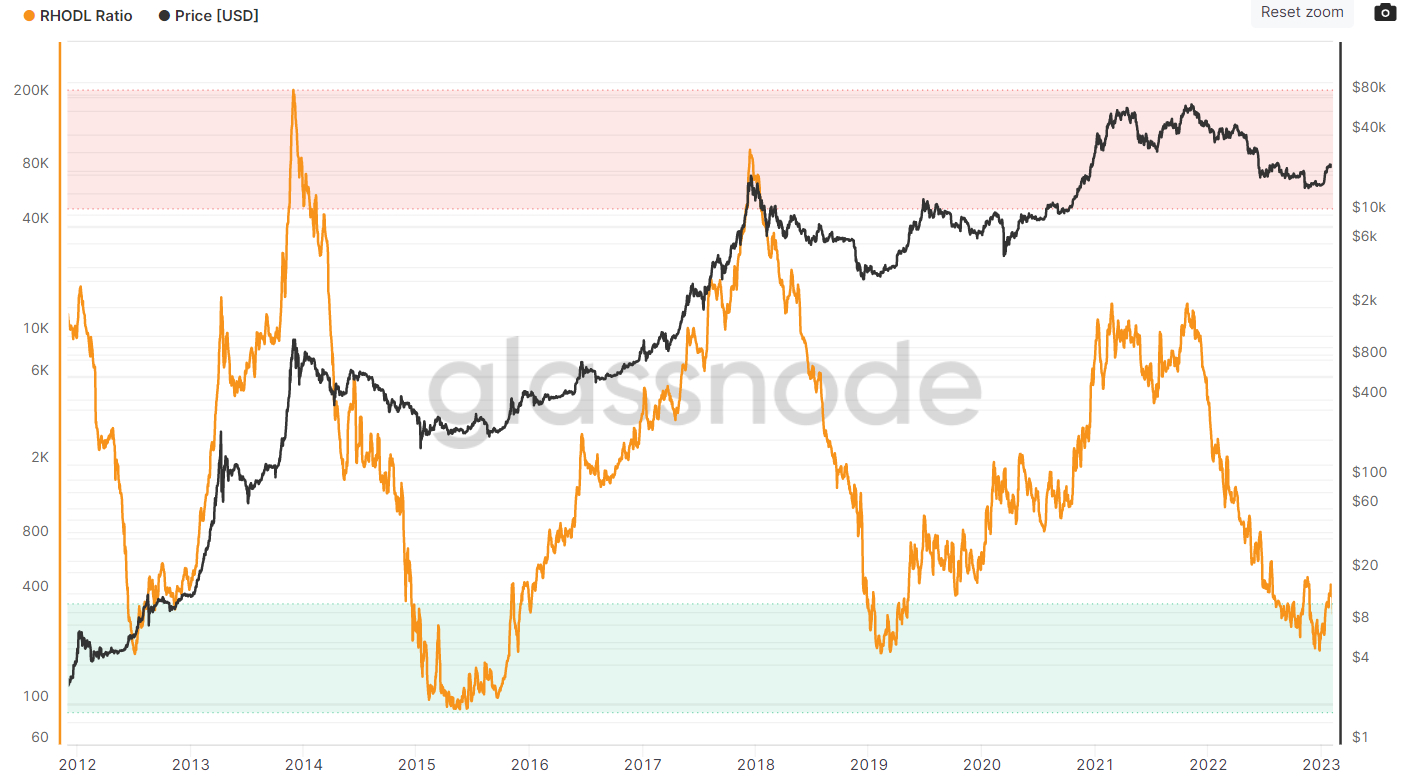[ad_1]

The number of Bitcoin wallet addresses holding a non-zero balance of the world’s first, most popular and largest cryptocurrency by market capitalization hit a new record high this week, suggesting the Bitcoin network’s global adoption continues to press ahead despite 2022’s challenging bear market and a tough global economic outlook for 2023.
According to data presented by crypto analytics firm Glassnode, the number of Bitcoin addresses with a non-zero balance rose above 43.8 million on Wednesday the 8th of January for the first time. That took the number of addresses above the previous record high printed back in mid-November 2022 of 43.76 million.

Back in November, the collapse of what had formerly been one of the largest cryptocurrency exchanges in the world FTX, which resulted in customers losing access to billions in funds, triggered a shift towards crypto self-custody. Investors rushed to get their Bitcoin off exchanges, triggering a surge in address numbers at the time.
However, capitulation as Bitcoin’s price fell to fresh 2022 lows in wake of jitters about contagion from FTX’s bankruptcy saw many wallets get rid of all of their Bitcoin, triggering an equally swift pullback in non-zero address numbers.
It has taken a roughly 40% surge in Bitcoin’s price since the start of the year amid 1) optimism for a better macro backdrop in 2023 and 2) increased on-chain and technical signs that the Bitcoin bear market is over to entice enough new investors back into the Bitcoin market to get the non-zero wallet address count back to a record high.
Non-zero Address Growth Driven By Arrival of Small Investors
According to Glassnode data on Bitcoin wallet address cohorts, the most recent surge in non-zero address numbers has been (unsurprisingly) led by a surge in wallets holding a small amount of BTC. The number of so-called Shrimp wallets holding less than 1 BTC just hit a new record high above 42.827 million.

At the same time, the number of Crab, Fish, Shark and Whale addresses holding 1-10, 10-1K and over 1K BTC respectively have all stagnated. Crab, Fish and Shark wallet numbers had initially surged in wake of the Bitcoin price drop after the FTX collapse, with larger investors using the opportunity to buy the dip.
It can thus be concluded that the recent rise in non-zero wallet address numbers is being accompanied by a rotation in Bitcoin ownership away from the larger investors to smaller new investors. Larger investors are much more likely to fall in the HODLer camp – those who buy and sit on their BTC for a prolonged period of time given their strong belief in the cryptocurrency’s outlook.
And evidence is gathering that the Bitcoin market could be in the beginning phases of a rotation from HODLers to new investors – a trend that often coincides with the birth of a new Bitcoin bull market.
Rotation from HODLers to New Investors Beginning – What This Means for BTC
Glassnode’s Realized HODL Ratio (RHODL), a ratio of the two Bitcoin age bands, looks to be in the process of bottoming. The RHODL is a gauge of the spread of Bitcoin wealth distribution between experienced and newer investors computed by comparing the number of coins that haven’t moved for 1-2 year with the number of coins purchased within the last week.

In late December, the RHODL fell to its lowest since the 2019 bear market but has since seen a decent rebound. As can be seen in the above chart, RHODL rebounds usually go hand in hand with a rising Bitcoin price – the RHODL captures an increase in demand for BTC from new investors, with increased participation in the Bitcoin market historically associated with long-term price appreciation.
So does the rise in non-zero wallet addresses mean the Bitcoin price is going higher from here? Well, not necessarily. Non-zero address numbers rose (slowly) throughout most of 2022 and this wasn’t enough to prevent the bear market. Demand from new dip-buying investors wasn’t enough to prevent price downside as a result of the capitulation of weak-handed short-term investors, as captured by the rise in dominance of older coins in the RHODL ratio.
For rising non-zero address numbers to be a bullish sign, it likely also needs to be accompanied by evidence that BTC wealth is also rotating towards newer investors, which certainly seems to be the case right now.
[ad_2]
cryptonews.com




